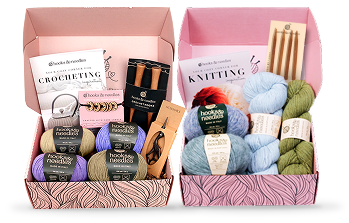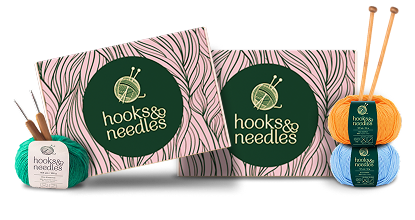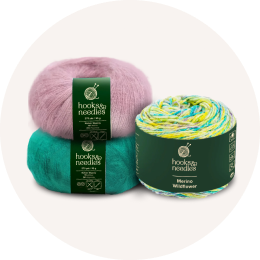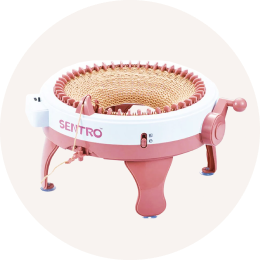Taking care of your yarn ensures it stays in great condition for all your projects. This guide explains how to clean, store, and protect your yarn from pests, moisture, and sunlight. Whether you’re working with wool, cotton, or acrylic, understanding fiber-specific care will help maintain its color, texture, and strength. Let’s dive into cleaning tips, storage solutions, and organizing ideas to keep your collection ready for use.
Yarn Cleaning and Maintenance
Cleaning yarn depends on its fiber type. Wool and animal fibers should be hand-washed in cool water with mild detergents to prevent shrinkage. Cotton can handle warm water but benefits from cold washes to preserve its color. Acrylic is durable and can be washed in warm water but avoid high heat during drying. Always follow care labels for the best results.
To dry yarn, lay it flat on a towel away from sunlight and heat. Avoid hanging wet yarn, as it can stretch and lose its shape. For older yarns with odors or stiffness, airing them out or using natural deodorizing methods like baking soda can help.
Protecting Yarn from Pests and Damage
Clothes moths and carpet beetles are common threats to natural fibers like wool and alpaca. Keep yarn clean and use natural repellents like cedar or lavender sachets. Regularly vacuum storage areas to prevent infestations. For moisture protection, store yarn in cool, dry places with silica gel packs to control humidity. Avoid direct sunlight to prevent fading and fiber damage.
Organizing and Storing Yarn
Choose storage options based on your space and collection size. For small stashes, clear plastic bins or breathable cotton bags work well. Larger collections benefit from modular shelving or rolling carts for easy access. Label containers with details like fiber type and color to stay organized. Digital tracking tools or color-coded systems can simplify inventory management.
For natural fibers, breathable storage is key. Cotton pillowcases or mesh laundry bags allow airflow while protecting yarn from dust. Acid-free tissue paper is ideal for wrapping delicate fibers like silk. Keep all storage away from direct sunlight and heat sources to maintain yarn quality.
Final Tips
Avoid overcrowding your storage to prevent crushing fibers. Check your yarn regularly for signs of pests or moisture issues. Proper care ensures your yarn stays ready for all your creative projects. For storage solutions and pest deterrents, explore options from Hooks & Needles to keep your collection in top shape.
Different Yarn Fibers and How to Care for Them
Understanding the type of yarn you're working with is essential. Each fiber has unique qualities that dictate how it should be cleaned, dried, and stored. The right care can keep your yarn in great shape, while the wrong approach can lead to damage.
Types of Yarn Fibers and Their Characteristics
In the United States, the most common yarn fibers include wool, cotton, acrylic, and blends. Each offers distinct features that influence how they're used and maintained.
Wool is a protein-based fiber known for its elasticity, making it perfect for fitted garments. Its ability to spring back to its original shape is a standout feature. However, wool is sensitive to heat and agitation, so it requires gentle handling.
Cotton, a cellulose fiber, is breathable and absorbs moisture well, making it ideal for lightweight and summer items. While it’s soft and has a matte finish, cotton lacks elasticity. When wet, it can stretch significantly, so careful drying is crucial.
Acrylic, a synthetic fiber, is durable and smooth, often with a slight sheen. It resists pests and moisture damage, making it low-maintenance. However, it may pill with wear over time. Acrylic is forgiving when it comes to washing and storing, which adds to its popularity.
Blended yarns combine two or more fibers to offer a mix of benefits. For example, a wool-acrylic blend provides warmth and easy care, while a cotton-bamboo blend combines breathability with extra softness. When caring for blends, follow the guidelines for the most delicate fiber in the mix.
Once you understand these fiber differences, the next step is learning to interpret care labels.
How to Read Yarn Care Labels
Care labels are your guide to keeping yarn in top condition. In the U.S., these labels use symbols to simplify instructions, and knowing how to read them can help you avoid costly mistakes.
- The washing symbol looks like a small tub. Dots inside the tub indicate water temperature: one dot for cold (under 86°F), two dots for warm (up to 104°F), and three dots for hot. A hand inside the tub means hand wash only, while a crossed-out tub means no washing with water.
- The bleaching symbol is a triangle. An empty triangle means chlorine bleach is safe, while one with diagonal lines allows only oxygen bleach. A crossed-out triangle means no bleach at all.
- For drying, look for a square symbol. A circle inside the square indicates tumble drying, with dots showing heat levels: one dot for low, two for medium, and three for high. A crossed-out circle means no tumble drying. Horizontal lines inside the square mean dry flat, while vertical lines indicate hang drying.
- The iron symbol provides ironing instructions, using dots for heat levels. One dot allows low heat (up to 230°F), two dots for medium (up to 300°F), and three dots for high (up to 390°F).
Water Temperature and Cleaning Tips
Following the care label is vital, but understanding how temperature affects different fibers is equally important.
- Wool and other animal fibers should always be washed in cold water (under 86°F). Heat causes the fibers to contract and felt, leading to irreversible shrinkage. Even lukewarm water can trigger this, so it’s better to err on the side of caution.
- Cotton is more tolerant and can handle warm water (up to 104°F). However, cold water is still recommended to preserve colors and prevent stretching.
- Acrylic and other synthetic yarns are highly durable and can generally withstand warm water (up to 104°F). Still, checking the label is wise, as some blends may have specific requirements.
The cleaning products you use also matter. For wool, stick to mild, pH-balanced detergents designed for protein fibers. Regular detergents can break down wool’s structure. Cotton is best cleaned with gentle, fragrance-free detergents, while acrylic can handle standard mild detergents. Avoid bleach and fabric softeners unless the label explicitly allows them, as these can weaken fibers or alter their texture.
| Fiber Type | Max Water Temp | Recommended Detergent | Drying Method |
|---|---|---|---|
| Wool | Under 86°F | Wool-specific (pH balanced) | Air dry flat |
| Cotton | Up to 104°F | Gentle, fragrance-free | Air dry or low tumble |
| Acrylic | Up to 104°F | Standard mild detergent | Low tumble or air dry |
| Blends | Follow most delicate fiber | Match most sensitive component | Air dry flat |
Improper care can cause lasting damage. Hot water can shrink and felt wool, damp storage can lead to mildew in cotton, and excessive heat can melt or deform acrylic. By following these guidelines, you’ll protect your yarn and keep it looking its best.
sbb-itb-f7119e8
How to Clean and Maintain Your Yarn
Keeping your yarn clean and in good condition ensures its color, texture, and strength stay intact.
Safe Ways to Clean Yarn
The way you clean your yarn depends on its fiber type and the care instructions on its label. For natural fibers like wool and silk, hand washing is the safest option. It gives you better control over water temperature and movement, reducing the risk of damage.
To hand wash, fill a clean basin with cool water and add a small amount of detergent designed for delicate fibers. Gently submerge the yarn, ensuring it’s fully soaked. Let it sit for 10 to 15 minutes, then carefully lift it out. Avoid wringing or twisting the yarn while it’s wet.
If your yarn is labeled as "superwash" or made from synthetic fibers, machine washing might be an option. Use the gentlest cycle with cold water, but steer clear of machine washing regular wool or other protein-based fibers, as the agitation can cause felting that can’t be undone.
For small stains, spot cleaning is your best bet. Use a damp cloth with a suitable detergent and gently dab the stained area, working from the edge toward the center to keep the stain from spreading. Always test the detergent on a hidden area first to make sure it doesn’t harm the fiber.
Once your yarn is clean, drying it correctly is just as important to preserve its quality.
How to Dry Yarn Without Damage
Drying yarn properly is key to maintaining its shape and structure. Always lay your yarn flat on a clean, absorbent towel to dry. This method prevents stretching and allows for even air circulation around the fibers.
After washing, gently squeeze out excess water without twisting the yarn. For extra moisture removal, roll the yarn in a clean towel and press down lightly. Then reshape it to its original form and lay it flat on a fresh, dry towel, keeping it away from direct sunlight and heat sources.
Avoid hanging wet yarn to dry, as the weight of the water can stretch it out permanently. This is especially true for cotton, which can lose its shape under stress. Wool and other animal fibers are also vulnerable when wet, as they temporarily lose their strength. Heat sources like radiators, hair dryers, or direct sunlight can shrink or damage synthetic fibers and cause color fading.
If you’re drying a finished project that needs blocking, pin it into the desired shape using rust-proof pins on a blocking mat or clean towels. Blocking not only helps even out stitches but also gives your project a polished look. Depending on the yarn’s thickness and the humidity, drying can take anywhere from 24 to 48 hours.
Choose a well-ventilated space for drying, but avoid areas with strong drafts, as uneven airflow can lead to patchy drying.
How to Refresh Old Stored Yarn
If your yarn has been stored for a long time, it might develop a musty smell or feel stiff. Thankfully, there are easy ways to bring it back to life.
Start by airing it out. Place the yarn in a shaded, well-ventilated area for several hours or up to a full day. This can help eliminate mild odors and restore some of its bounce and softness.
For more stubborn smells, try a natural deodorizing method. Put the yarn in a breathable cotton bag or basket with sachets of baking soda or activated charcoal. Leave it in a dry spot for a few days to absorb odors without introducing moisture or chemicals.
Sunlight can also help freshen yarn and deter pests. Hanging yarn or finished projects in direct sunlight for a day can neutralize odors and drive away insects. However, limit sun exposure to avoid fading, especially with brightly colored or dark yarns.
If the yarn feels stiff or lifeless, a gentle wash and proper drying can work wonders. Follow the cleaning method suited to your fiber type, and make sure to rinse out all detergent. For wool or other animal fibers that have lost their softness, adding a teaspoon of hair conditioner to the final rinse can restore some of the natural oils and make the yarn feel softer. Just remember to rinse thoroughly afterward.
To protect stored yarn from pests, freezing is a chemical-free solution. Seal the yarn in plastic bags and freeze it at –10°F for one to two weeks. This kills moth larvae, eggs, and other insects. Once done, let the yarn slowly return to room temperature before removing it from the bags.
Keeping Yarn Safe from Bugs and Weather Damage
Taking care of your yarn collection means protecting it from pests, moisture, and heat. Even the best-kept yarn isn't immune to damage from moths, mold, or sunlight. By understanding these risks and acting early, you can avoid the frustration of finding ruined skeins in your stash.
Common Bugs That Eat Yarn and How to Stop Them
The main troublemakers in American homes are clothes moths and carpet beetles. Clothes moth larvae love natural fibers like wool, alpaca, and cashmere, leaving behind small holes, webbing, or tiny cocoons. Carpet beetle larvae are just as destructive, creating irregular holes in animal-based yarns.
Bugs are especially attracted to yarn with pet hair, sweat, or food stains. Keeping your yarn clean and inspecting it regularly can help stop infestations before they get out of hand.
To naturally repel insects, use cedar blocks, lavender sachets, or dried rosemary in breathable pouches. Place cedar blocks in your storage and refresh them monthly by lightly sanding the surface and adding a few drops of cedar oil. If you discover a severe infestation, freezing the affected yarn (as outlined in earlier cleaning tips) can help eliminate pests.
Regular vacuuming is another key step. Clean around storage areas, focusing on baseboards, corners, and under furniture where bugs like to hide. This removes eggs and larvae before they can cause damage.
Protecting Yarn from Moisture and Humidity
Once pests are under control, the next step is guarding your yarn against moisture. Damp conditions can lead to mold, mildew, and weakened fibers, while high humidity can create a double threat by encouraging pests to thrive.
The best way to protect your yarn is by storing it in cool, dry places with stable conditions. Avoid areas like basements, bathrooms, or attics, as these spaces often have fluctuating humidity and temperature levels. Instead, opt for climate-controlled parts of your home where conditions remain consistent.
Silica gel packs are excellent for keeping storage containers dry. Place a few in each container to absorb excess humidity, especially if you live in a humid region or notice condensation. These packs can be reactivated by heating them in a low oven, making them a long-lasting and budget-friendly solution.
When choosing storage, breathability is key. Clear plastic bins with tight lids protect against dust and pests, but they need ventilation or desiccants to prevent moisture buildup. Cotton or linen bags are another great option, as they allow airflow and reduce the risk of trapped moisture. Wooden storage boxes also work well, offering protection while allowing some air circulation.
Avoid non-ventilated plastic bags for long-term storage. These can trap moisture and lead to mold growth. If you must use plastic, ensure there’s some ventilation or include moisture-absorbing materials.
Keeping Yarn Away from Sun and Heat
After addressing pests and moisture, don’t forget about sunlight and heat, which can seriously harm your yarn. Direct sunlight causes color fading and fiber damage that can’t be undone. Even synthetic yarns are at risk if exposed to heat for too long.
Store your yarn away from windows, radiators, and heating vents. While sunlight might make your yarn look beautiful, those UV rays are steadily breaking down fibers and bleaching colors. Even indirect sunlight can cause gradual fading, especially in darker or brighter yarns.
Stability in temperature is also important. Avoid places like garages, unheated basements, or attics, where temperature swings can weaken fibers over time. These fluctuations can cause stress on the yarn, affecting its quality and performance.
Interestingly, a brief exposure to sunlight can be helpful for refreshing yarn. Hanging it in direct sunlight for a single day can neutralize odors and discourage pests. However, limit this to avoid fading, especially for yarns that have been stored for a long time.
For larger collections, organize your storage to protect the most delicate yarns. For example, silk should be wrapped in acid-free tissue and kept in complete darkness, while cotton and acrylic can handle slightly more light. Regardless of the material, all yarn benefits from being stored in shaded, temperature-stable areas.
How to Organize and Store Your Yarn Collection
Keeping your yarn collection organized not only preserves its quality but also makes it easier to find what you need when inspiration strikes. A good system should fit your space, budget, and crafting habits.
Storage Options for Small and Large Collections
Choosing the right storage depends on how much yarn you have and the space available.
For small collections (less than 20 skeins), there are plenty of affordable options. Under-bed storage boxes are a great choice for tight spaces, costing between $8 and $25 depending on size. These boxes keep yarn tucked away but easy to access.
Cotton or linen bags are another budget-friendly solution, priced at $6 to $20 each. They’re breathable and ideal for natural fibers, whether stored in closets, on shelves, or in drawers. If you prefer to see your stash, clear plastic bins with tight lids are a practical option. They protect against dust and pests while letting you quickly scan for colors and textures.
For larger collections, more versatile solutions work best. Modular cube organizers and shelving units are excellent for dedicated craft spaces, allowing you to expand as your collection grows. These setups make it easier to see your yarn, so you don’t accidentally buy duplicates.
Rolling carts are perfect for those who like to move their projects around the house. They keep everything sorted - by color, weight, or fiber - while offering mobility. To maximize space in smaller areas, try wall-mounted pegboards or hanging organizers, which take advantage of vertical storage.
| Storage Type | Best For | Price Range | Key Benefits |
|---|---|---|---|
| Under-bed boxes | Small collections, tight spaces | $8-$25 | Space-saving, dust protection |
| Clear plastic bins | All collection sizes | $8-$25 | Visible, stackable |
| Cotton/linen bags | Natural fibers, small batches | $6-$20 | Breathable, portable |
| Modular cubes | Growing collections | $50-$200 | Expandable, customizable |
| Rolling carts | Active projects | $40-$150 | Mobile, easy access |
Once you’ve chosen your storage, labeling containers can make finding the right yarn a breeze.
How to Label and Track Your Yarn
Labeling and tracking your yarn keeps everything organized and prevents confusion. Start by categorizing your yarn in a way that works for you. Some prefer sorting by color, others by weight or fiber type. A combination - grouping by weight first and then by color - often works best.
For labels, you don’t need anything fancy. Masking tape and a permanent marker can do the job, letting you note details like weight, fiber content, and color. If you want a cleaner look, a label maker produces neat, smudge-proof tags.
Digital tracking is especially helpful for larger collections. Create a spreadsheet with columns for brand, color, weight, fiber content, yardage, and intended project. Add photos of each yarn to your inventory - this is a lifesaver when you’re shopping and can’t remember what you already have.
Prefer something hands-on? Index cards or a notebook work just as well. Write down details about your stash, including which projects each yarn is earmarked for. This can prevent the all-too-common problem of forgetting which yarn you bought for a specific pattern.
For even quicker organization, try a color-coded system. Use colored dots or tags to mark yarn by purpose - red for holiday projects, blue for baby items, green for personal creations. This lets you grab what you need at a glance without reading every label.
Storage That Lets Natural Fibers Breathe
Natural fibers like wool, alpaca, and cotton require proper airflow to stay in good condition. Unlike synthetic yarns, these fibers can develop mold or mildew if stored in airtight containers for too long.
Cotton pillowcases are a simple and affordable way to store individual skeins or small batches. They’re washable, breathable, and easy to label. Just tie the open end with a ribbon and add a tag. This method is particularly effective for wool during off-seasons.
For a more polished option, organza pouches offer breathability while keeping yarn visible. These are perfect for luxury fibers like cashmere or silk that need extra care.
If you’re storing multiple skeins for a large project, mesh laundry bags are a practical choice. They allow air circulation while keeping yarns together and tangle-free. Plus, they prevent yarn cakes from getting crushed.
For long-term storage, wrap individual skeins in acid-free tissue paper before placing them in breathable containers. This protects against color transfer, light damage, and dust while helping yarn maintain its shape.
Wooden storage boxes provide a stylish option, especially cedar ones, which naturally deter pests. However, cedar loses its effectiveness over time, so refresh it monthly with light sanding and cedar oil.
No matter how breathable your storage is, the environment matters too. Keep containers slightly elevated off the floor or walls to allow airflow around them. For portable storage, the Hooks & Needles Knitting and Crochet Organizer Backpack ($69.97) is a great choice, offering multiple compartments and earning praise from over 90 reviewers.
Hooks & Needles: Your Source for Yarn Care Products
Hooks & Needles is here to help you protect and organize your yarn collection with products designed specifically for crafters. Proper storage isn’t just about tidiness - it’s about keeping your yarn in excellent condition, ensuring every skein is ready when inspiration strikes. Whether you’re safeguarding a small stash or managing a large collection, Hooks & Needles has solutions tailored to your needs.
Storage and Care Solutions for Every Crafter
Hooks & Needles offers a thoughtful selection of storage options to keep your yarn safe and organized. Their airtight containers with sealed lids shield against moisture and pests, while clear storage bins make it easy to check the condition of your yarn at a glance.
For natural fibers like wool, alpaca, or silk that need airflow, their breathable fabric bags made from cotton or linen provide the perfect home. These bags come in various sizes, from compact pouches for single skeins to larger bags that can hold yarn for entire projects.
To keep pests at bay, the store offers natural deterrents like cedar blocks and lavender sachets - simple, effective, and affordable. And for vintage or secondhand yarn finds, vacuum seal bags ($15-$25 per pack) offer dual benefits: efficient storage and a way to detect pest issues quickly. If the seal breaks, you’ll know something’s wrong.
For added organization, Hooks & Needles provides labeling supplies designed just for yarn. Waterproof tags and customizable labels help you track details like fiber content, colorways, and yardage, making it easier to manage even the largest collections.
Subscription Boxes and Kits: A Smarter Way to Craft
Hooks & Needles takes yarn care a step further by helping crafters avoid over-accumulation. Their monthly subscription box ($34.97/month with over $120 in value) delivers hand-picked projects designed to use yarn efficiently. Each box includes European yarns, exclusive patterns, and professional tools, all perfectly coordinated to ensure everything works together seamlessly.
With a 4.8/5 rating and over 225,000 boxes shipped, customers rave about how this subscription has transformed their crafting habits.
"I went from buying yarn I never used to completing 12 beautiful projects this year. The difference? Having everything I need in one place",
- Jessica L., verified customer.
"I never finished projects before, but Hooks & Needles helped me complete my first headband!"
- Maria S.
For one-off projects, their curated kits are another great option. These kits include just the right amount of yarn and materials, helping you avoid leftover skeins that often end up in long-term storage.
Comprehensive Yarn Care in One Place
What sets Hooks & Needles apart is their deep knowledge of yarn and fiber care. Their product descriptions include tips for matching storage solutions to specific fibers - like breathable bags for natural fibers and airtight containers for cotton and acrylic yarns. They even stock specialty items like acid-free tissue paper for wrapping delicate luxury yarns and pheromone moth traps ($10-$20 per pack) to monitor for pests.
The convenience of having everything in one place is a game-changer. As Hooks & Needles puts it, "No more hopping between shops and sites, it's all here!" Whether you’re refreshing your storage with cedar blocks, expanding your collection with new containers, or revamping your entire system, they’ve got you covered with expert guidance every step of the way.
Their mission goes beyond selling products.
"We promise premium artisan yarns, clear instructions that build your confidence, thoughtful convenience delivered to your door, and a warm crafting community that celebrates every stitch,"
the company states, highlighting their commitment to supporting crafters at every level.
Hooks & Needles provides not only the tools and products you need but also the knowledge and community to make yarn care and organization simple and effective. Whether you’re just starting out or have years of experience, they’re ready to help you take your yarn care to the next level.
Final Tips for Better Yarn Care
Taking care of your yarn doesn’t have to be complicated - simple, consistent habits can keep it in excellent condition. Start by storing your yarn in a cool, dry place away from direct sunlight, and check your collection regularly for any signs of pests or moisture issues.
Avoid common storage pitfalls. Don’t use unventilated plastic bins, as trapped moisture can lead to mildew. Keep your yarn out of direct sunlight to prevent fading, and avoid overcrowding storage spaces, which can crush delicate fibers. Also, resist pre-winding yarn into cakes unless you’re ready to use it, as this can stretch the fibers unnecessarily.
Different fibers need different care. Wool does best in breathable containers and should be kept away from heat sources to prevent felting. Cotton benefits from being folded with acid-free tissue to avoid yellowing and stretching. Acrylic yarn is prone to pilling, so having a fabric shaver on hand can help keep it looking fresh. Silk, on the other hand, should always be wrapped in acid-free tissue to prevent snags and discoloration.
Protect against pests naturally. Lavender sachets, cedar blocks, or rosemary can act as gentle, chemical-free deterrents. If you do encounter pests, consider methods like freezing or heat treatments to eliminate them without harsh chemicals.
Stay organized to safeguard your collection. Clear bins make it easy to monitor for problems, and labeling containers with details like fiber type, weight, and purchase date ensures nothing gets forgotten. Take time to clean storage areas monthly, especially those hidden spots where dust and pet hair tend to gather.
When refreshing yarn that’s been stored for a while, hand-wash it gently in cool water with a mild detergent, then lay it flat to dry away from sunlight and heat. For musty odors, let the yarn air out in a shaded, breezy spot. If skeins are tangled or compressed, carefully unwind and re-skein them to help the fibers relax naturally. These small efforts can make a big difference in maintaining your collection over time.
By following these tips, you’ll keep your yarn in great shape for all your future projects. Regular inspections, proper storage, and thoughtful organization ensure your collection stays manageable and ready to use.
Check out Hooks & Needles for storage solutions, natural pest deterrents, and tools to keep your yarn in perfect condition. Everything you need is just a click away!
FAQs
What’s the best way to store my yarn based on my space and the type of fiber?
When organizing your yarn, start by assessing the space you have - whether it’s shelves, bins, or drawers, each can work depending on your setup. For natural fibers like wool, opt for breathable containers to prevent moisture buildup and keep pests at bay. On the other hand, for synthetic or more delicate fibers, airtight containers are best for keeping them clean and dust-free. If you’re short on space, think about using vertical storage options like stackable bins or wall-mounted shelves to maximize your area. Be sure to clearly label your containers so you can quickly locate the yarn you need. Hooks & Needles offers a range of tools and solutions to help you keep your yarn collection neat and well-cared for.
How can I naturally protect my yarn from pests without using chemicals?
To protect your yarn from pests without using chemicals, keep it in airtight containers to prevent access. You can also place lavender sachets or cedar chips inside as natural deterrents against moths and insects. Ensure your storage space stays clean, dry, and well-ventilated, as pests are more likely to thrive in humid or messy conditions. These precautions will help maintain your yarn's condition over time.
How do I refresh yarn that smells musty after being stored for a long time?
To get rid of a musty smell in yarn, start by placing it in a clean, dry area with plenty of airflow. Make sure to avoid direct sunlight, as it can fade colors or harm delicate fibers. If the odor doesn’t go away, try putting the yarn in a breathable bag, like a cotton pillowcase, along with a few baking soda sachets or activated charcoal packets to help absorb the smell. Let it sit for a few days, checking occasionally to see if the odor has lessened.
If the smell is especially stubborn, you can gently handwash the yarn. Use lukewarm water and a mild detergent that's safe for fibers. After washing, press the yarn lightly with a towel to remove excess water, then lay it flat to dry completely in a well-ventilated space. Make sure the yarn is entirely dry before storing it again to avoid any moisture-related problems, like mildew.


















